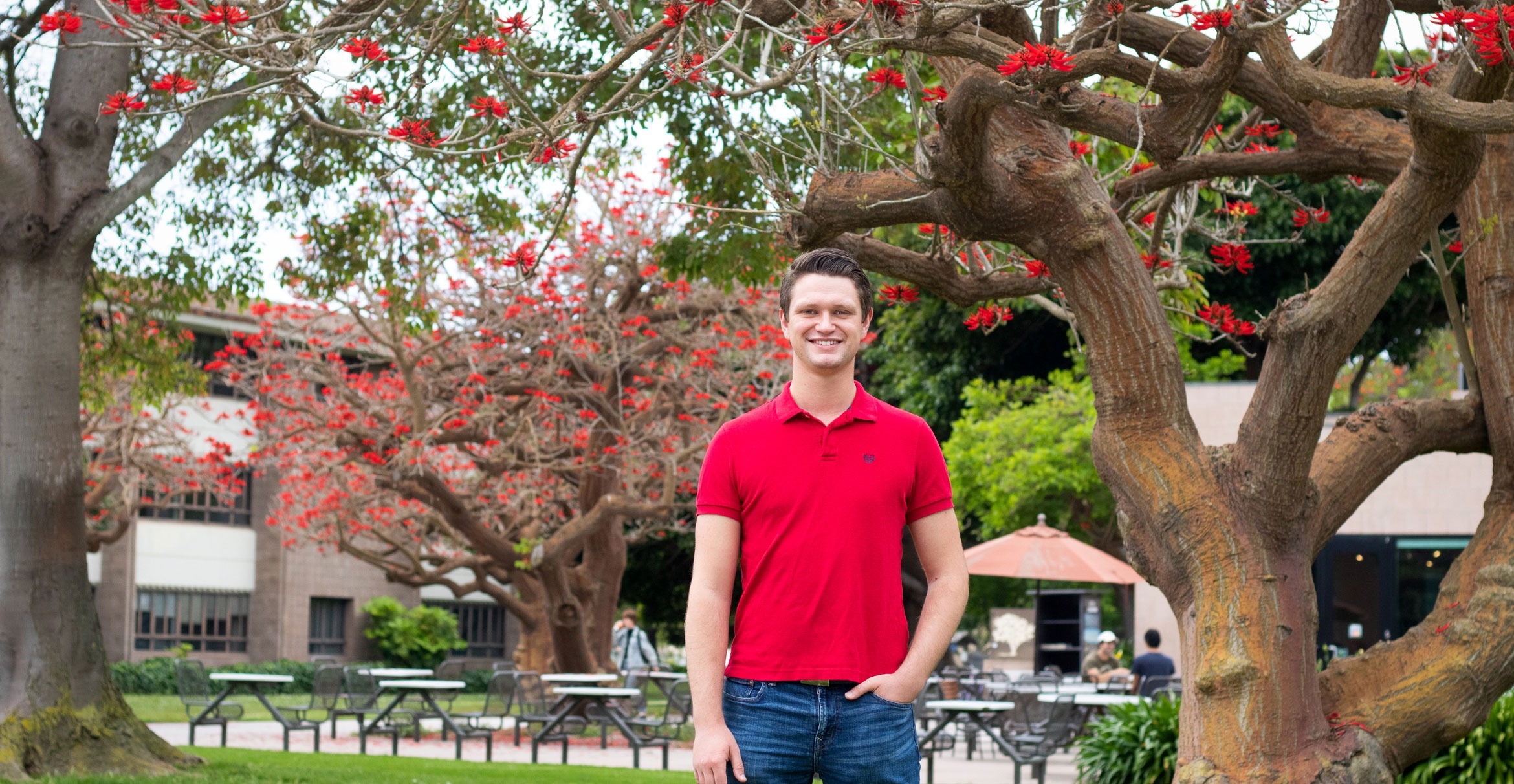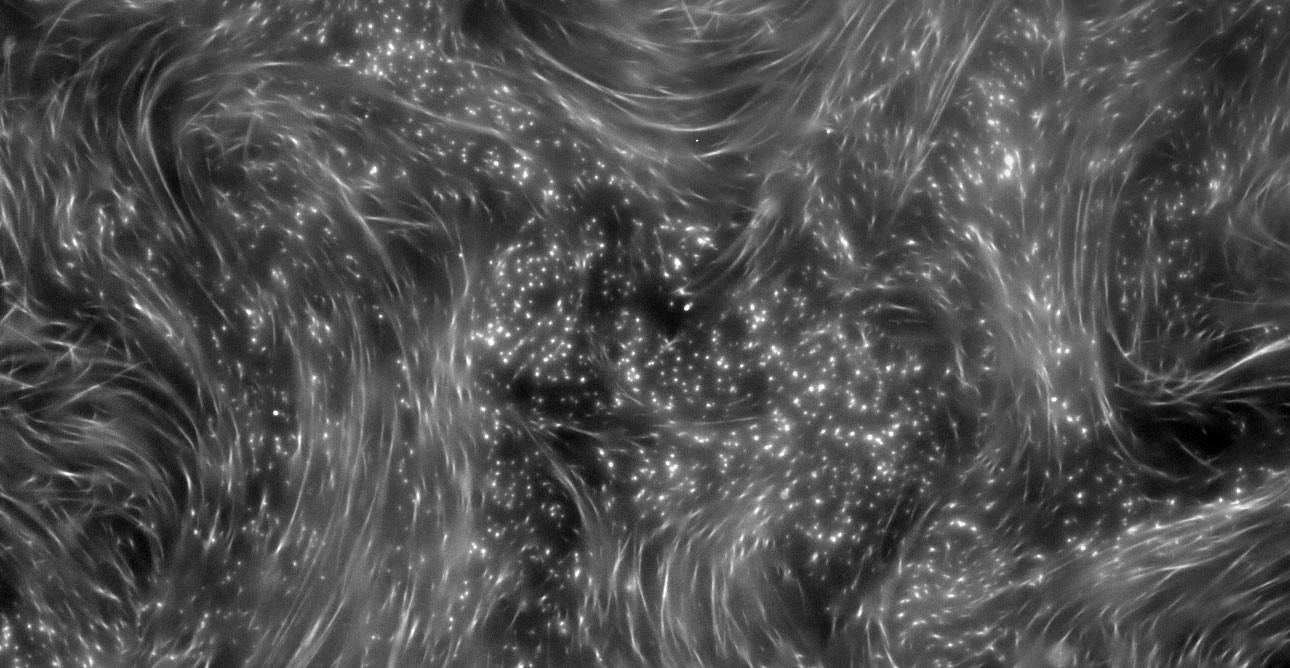
New physics Ph.D. Ray Adkins is bound for Yale, prestigious award in hand, to apply his research to neuroscience
During his time as a doctoral student, Ray Adkins worked as a graduate researcher in the Dogic Lab, studying the field of physics known as active matter. At the lab led by Professor Zvonimir Dogic, Adkins contributed to research that has brought new light to the rules and laws that govern how materials “self-organize.” Now, as Adkins prepares to walk at UCSB’s Commencement to receive his PhD in physics, he is also preparing to set off to Yale University this fall, where he’ll be applying the systems of physical modeling that he learned as a graduate researcher to neuroscience with a prestigious Schmidt Science Fellowship for postdoctoral research.
Working with active materials — which are constantly in motion — Adkins looks at how interactions within materials create order, and how this motion causes material properties to emerge on a large scale. Researchers reconstitute cell proteins, building systems from the bottom up to study their behavior.
The flight patterns of a flock of birds illustrate the principle of active matter: Each bird moves in its own way, only interacting with its neighbors, but on a large scale, we see patterns visible across the sky. Cell proteins can self organize in patterns replicating this principle, and scientists have captured what they produce as swirling brushstrokes and dancing dots, among other patterns.

“These materials display life-like behaviors, turbulent mixing and synchronous motion,” Adkins said. At UCSB, Adkins developed new active materials, including the first fully three-dimensional active liquid-crystal and phase-separated active droplets.
“I worked with collaborators to use these materials to better understand active matter more generally, and to measure specific quantities, like the forces generated by the active fluid,” he said.
By taking this framework of physical modeling to the field of neuroscience, Adkins plans to study how a collection of neurons self-organize to form a nervous system. “I will watch as a nervous system forms, and use physical modeling to try to describe how the individual neurons assemble to produce the structures we see on the large scale,” he said.
Dogic, who is also his dissertation advisor, said Adkins is a phenomenal experimental physicist who completed three different experiments in his dissertation. “Each experiment on its own would represent a doctoral thesis of the highest quality,” Dogic said. “When taken together they represent a truly singular contribution to the field of soft and active matter. I cannot think of a more deserving candidate for the Schmidt Science Fellowship.”
Adkins began his studies at community college before receiving his bachelor’s and master’s degrees from Case Western Reserve University and his PhD at UCSB in June 2023.
The Schmidt Fellows Program supports innovative, interdisciplinary scientific research and is delivered in partnership with the Rhodes Trust to provide “the world’s best emerging scientists with new skills and perspectives to develop novel solutions to society’s challenges, become scientific and societal thought leaders, and accelerate ground-breaking discoveries.”
Debra Herrick
Associate Editorial Director
(805) 893-5446
debraherrick@ucsb.edu



